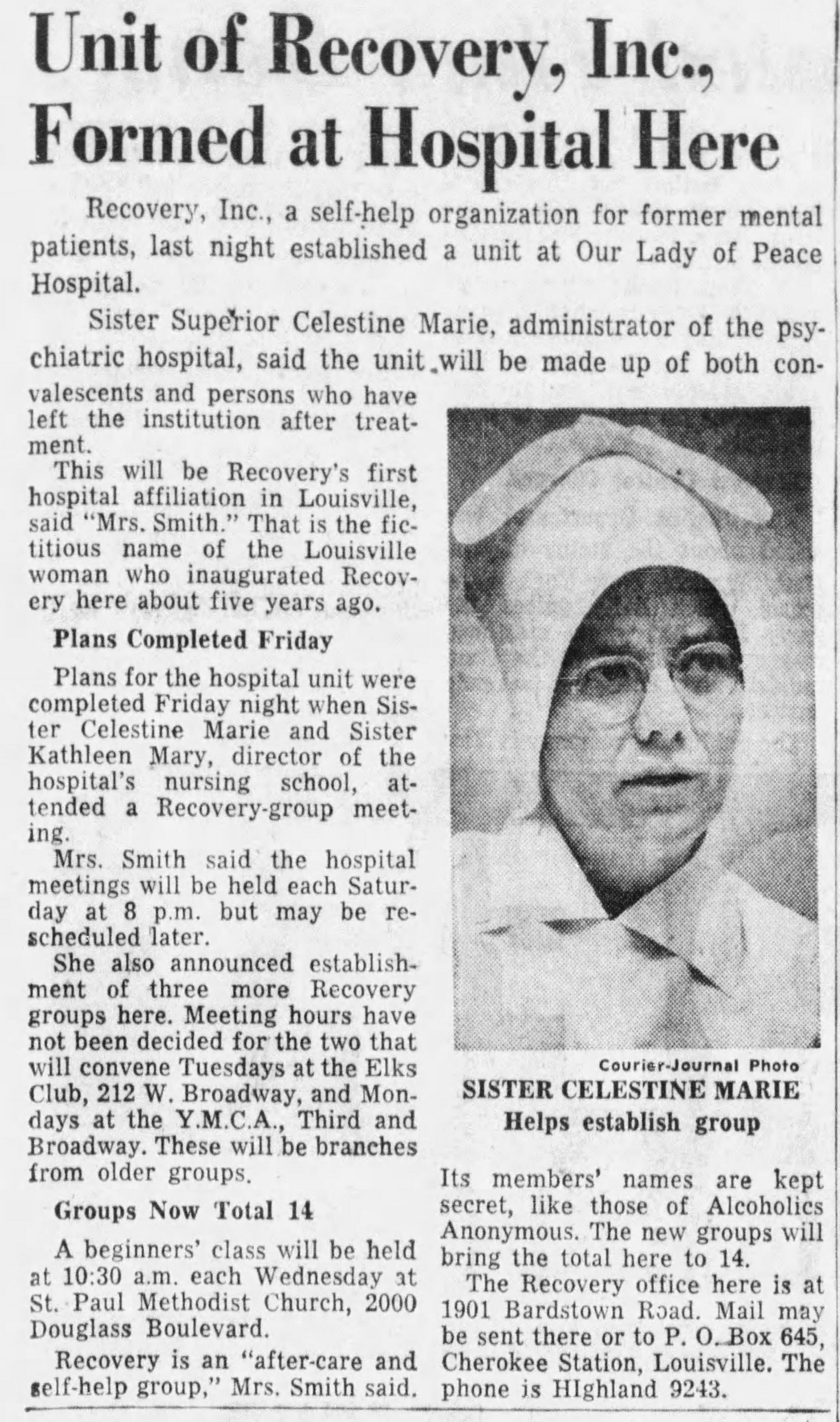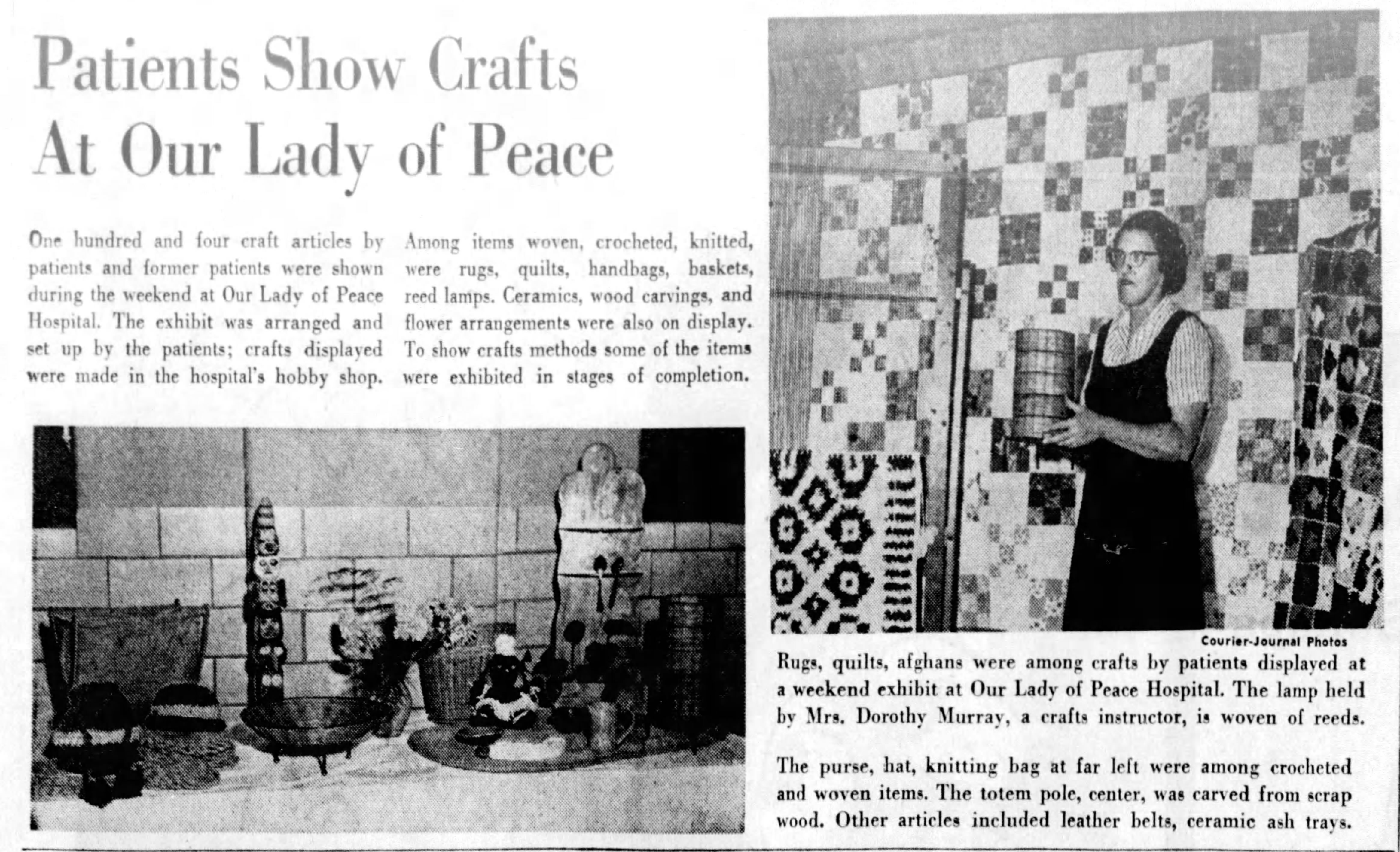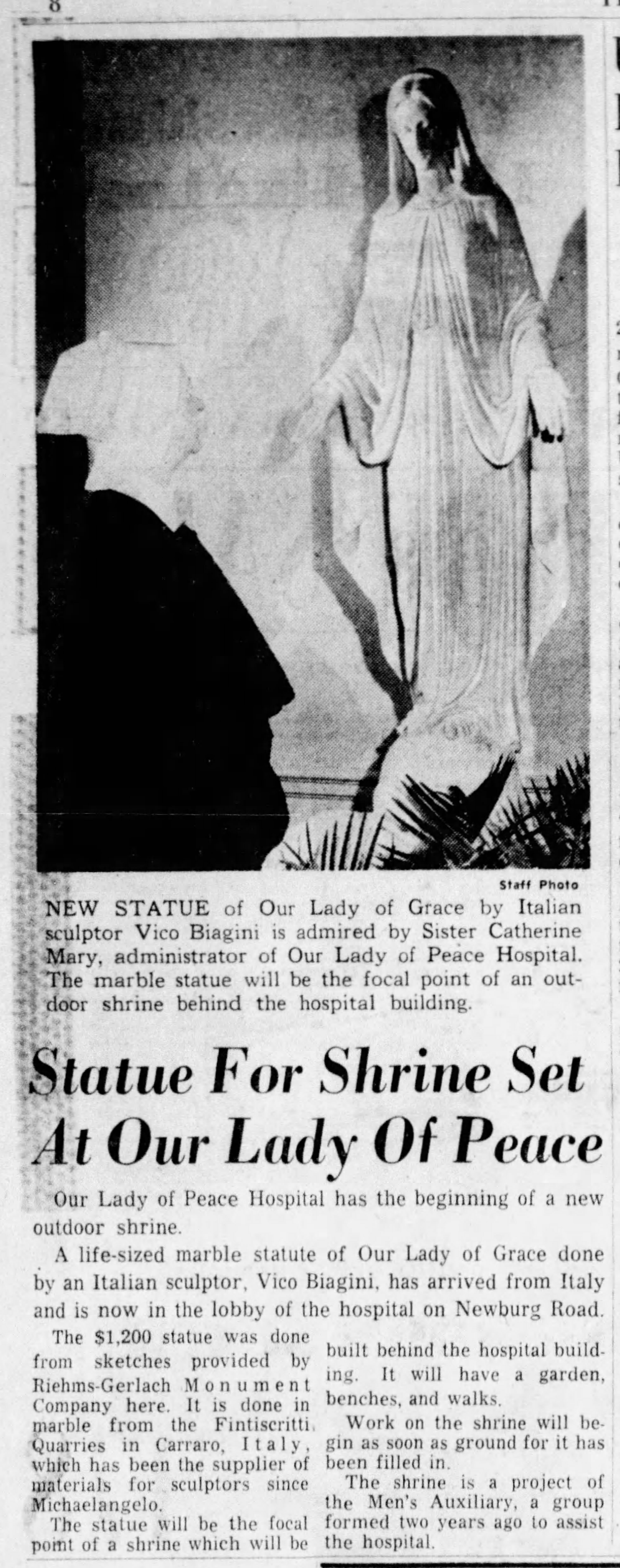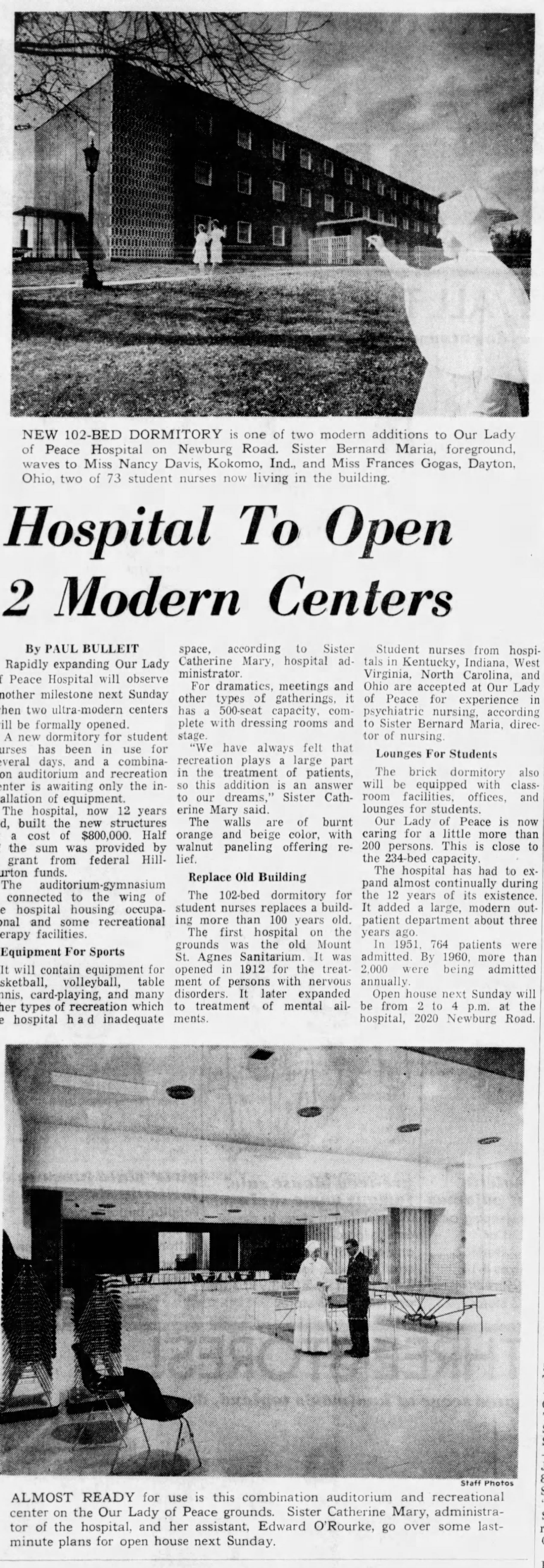History
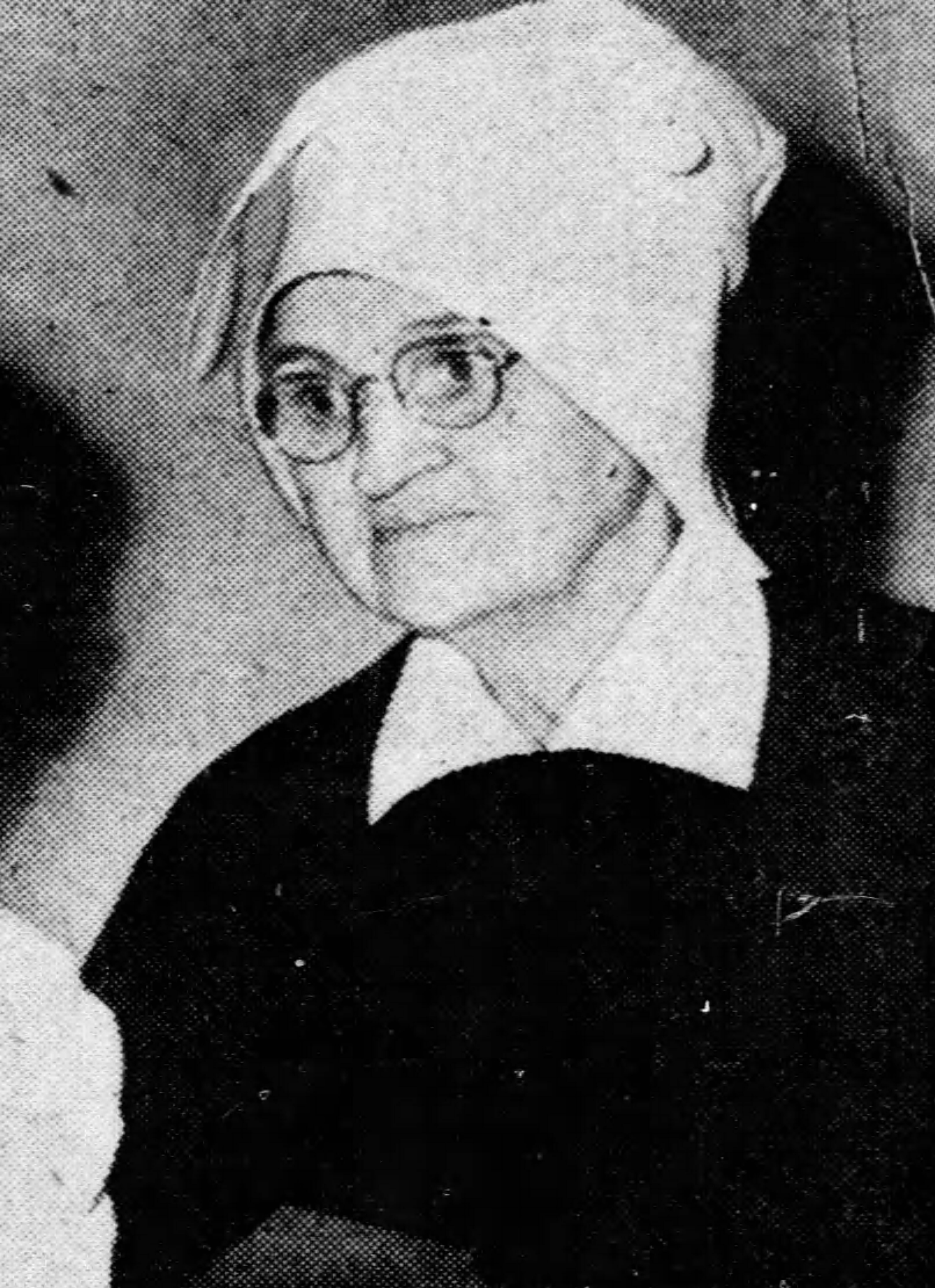
Our Lady of Peace Hospital was founded in 1951 by the Sisters of Charity of Nazareth as a treatment facility for adults with mental disorders. The first superintendent of the hospital was Sister Mary Benigna. Five psychiatrists made up the clinical treatment team including Drs. John Bell, Louis M. Foltz, Arthur R. Kasey, Jr., John Trawick, Jr., and Joseph Goldstein. Soon after opening, Our Lady of Peace had approximately 70 patients with a capacity of 150 patients. Approximately 33 of those patients were transferred from Mount St. Agnes Hospital (which was later converted to a nurses’ home for Our Lady of Peace). The program for mental patients was touted by Louisville psychiatrists, “as fine as any in the country (Courier-Journal, 1951).”
Just after a full year of operations, the Vatican warned Catholics against psychoanalysis; a common psychotherapeutic treatment for mental disorders. Sister Mary Benigna reaffirmed that Our Lady of Peace did not use psychoanalysis. However, all five of the psychiatrists used technique(s) of psychoanalysis. Common treatment modalities at the time included free association, shock therapy, insulin coma therapy, medication and brain surgery. Later that year (1952) Sister Mary Benigna would become a fellow of the American College of Hospital Administrators.
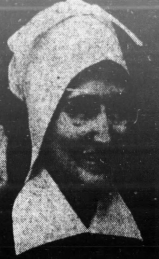
In 1953, Sister Mary Benigna accepted a position at the newly built St. Vincent’s Infirmary in Little Rock, Arkansas. Sister Mary Bertha took over as administrator of Our Lady of Peace. That same year, psychiatrist began experimenting with carbon-dioxide-oxygen treatment for neurotic patients. The patient would lie supine on an examination table and a breathing mask would be placed over the nose and mouth. It was noted as being a painless 5-minute treatment and the patient remained fully clothed in a comfortable position. This approach would be repeated as many as 50 times but results were never consistent throughout patients.
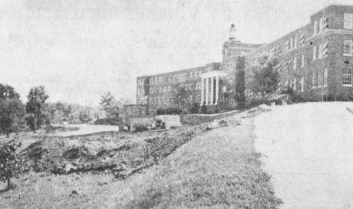
As the decade continued on, the hospital continued to see growth and executive and administrative changes. In 1956, the hospital sought $1,000,000.00 to increase capacity by 100 beds what was approved later that year. Room rates per day at the hospital in 1957 were between $10.50 and $16.50. In 1958 the hospital was officially granted accreditation by the Joint Commission on Accreditation of Hospitals. The same year Sister Bernard Maria was named as the director of nursing by administrator Sister Catherine Mary. Daily rates in 1958 were also increased by $1 to help accommodate new recreations such as a hobby shop and bowling lanes.
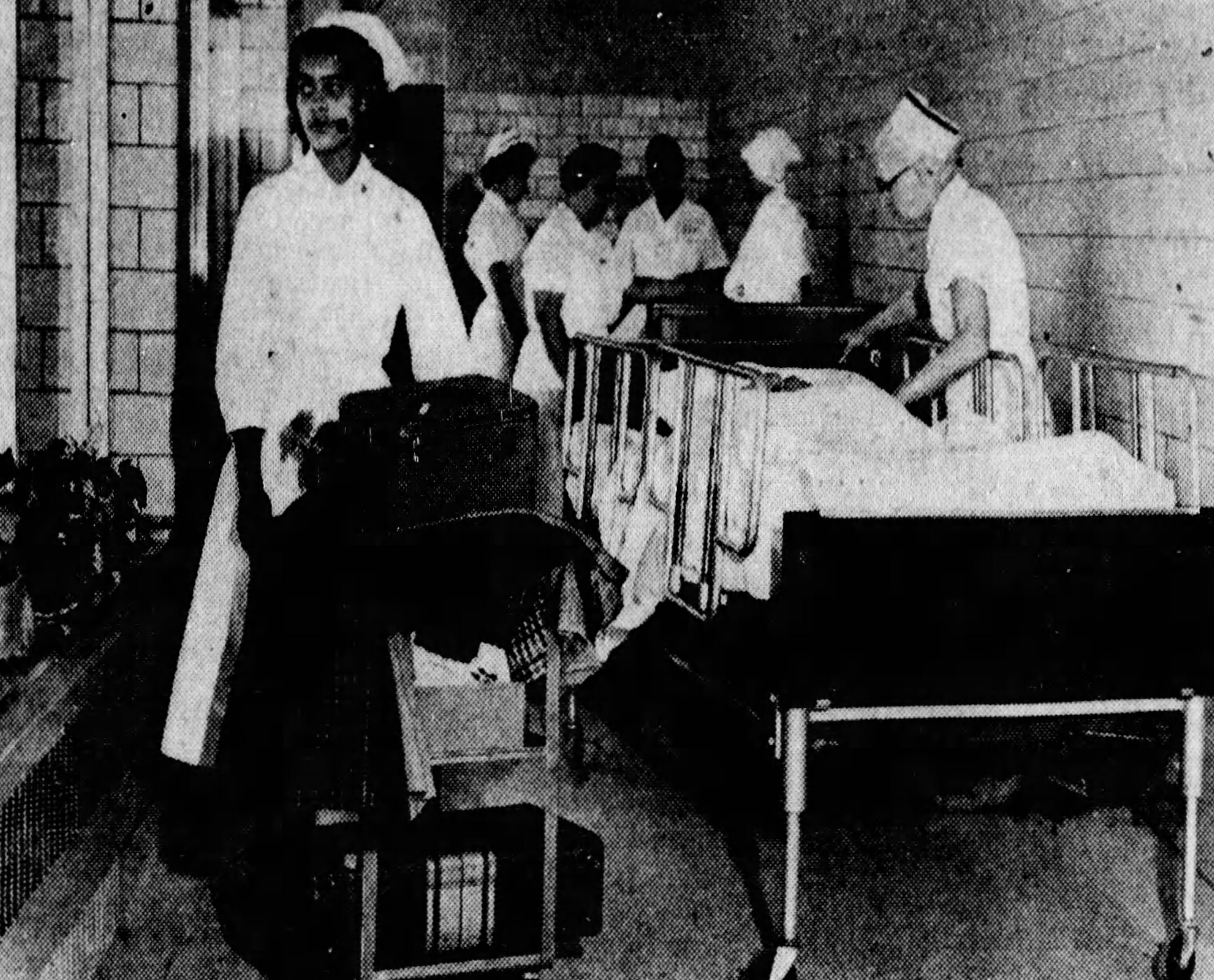
In later November of 1958, Our Lady of Peace opened its new one million dollar wing housing 93 beds and increasing the hospital’s size to 245 beds total. The new wing had a convent for the sisters and would house the bowling lanes and hobby shop. In January of 1959, Dr. George Doyle because president of the staff at the hospital. 1961 brought the 10-year anniversary of Our Lady of Peace Hospital. In July of 1962, a U.S.O. organization performed for the hospital including Orlando White and others. Later that year in October a $400,000.00 grant was approved to establish a new nursing-school building on the campus of the hospital.
Throughout the remainder of the 20th century, Our Lady of Peace Hospital maintained consistent and progressive growth. In the late 1980s, the hospital began providing child and adolescent care services an expansion beyond adult treatment. Today, Our Lady of Peace has more inpatient beds for children and adolescents than any other facility in the Commonwealth. Our Lady of Peace remains at its current location today and is operated by KentuckyOne Health.
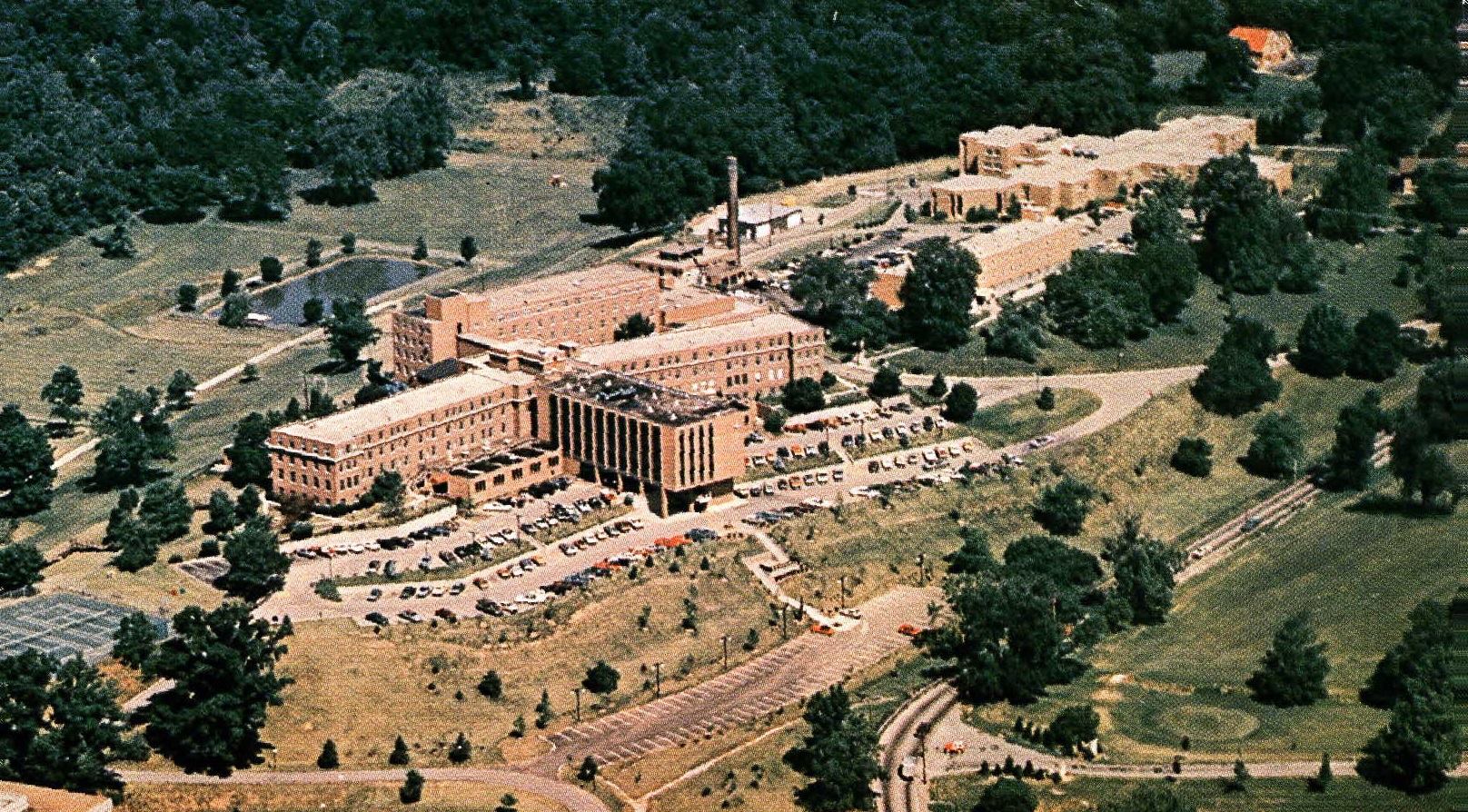
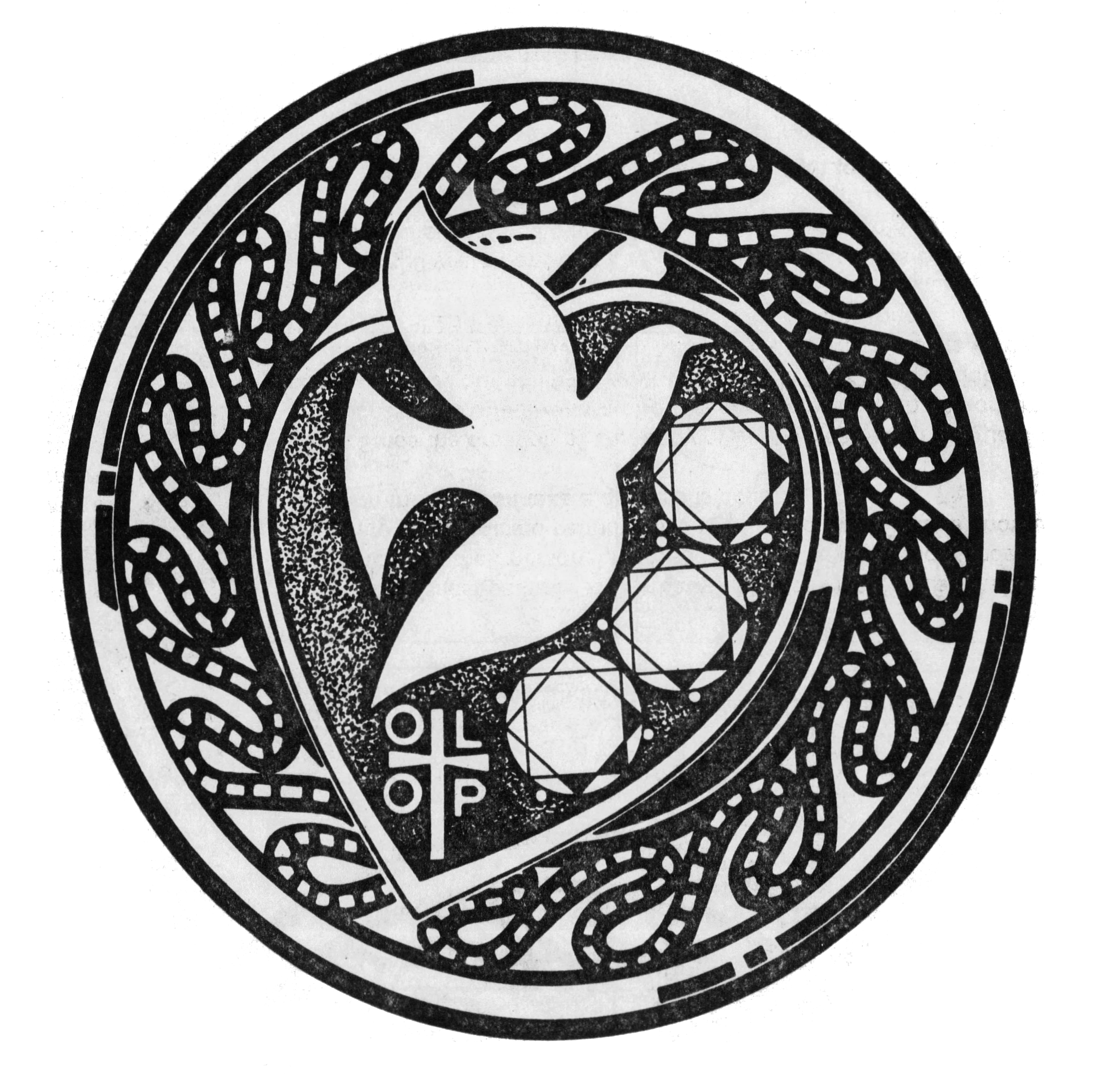
Vintage Newspaper Articles
Contributed by Phil Tkacz & Shawn Logan | contact@kyhi.org
⁘ Works Cited ⁘
- The Courier-Journal (Louisville, KY), 17 March 1951, p. 13.
- The Courier-Journal (Louisville, KY), 13 August 1957, p. 15.
Important note:
If you would like to use any information on this website (including text, bios, photos and any other information) we encourage you to contact us. We do not own all of the materials on this website/blog. Many of these materials are courtesy of other sources and the original copyright holders retain all applicable rights under the law. Please remember that information contained on this site, authored/owned by KHI, is provided under a Creative Commons Attribution-NonCommercial-NoDerivatives 4.0 International License.
Photographs, text, illustrations and all other media not authored by KHI belong to their respective authors/owners/copyright holders and are used here for educational purposes only under Title 17 U.S. Code § 107.





